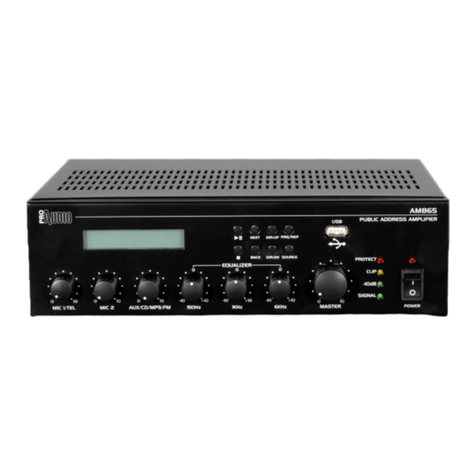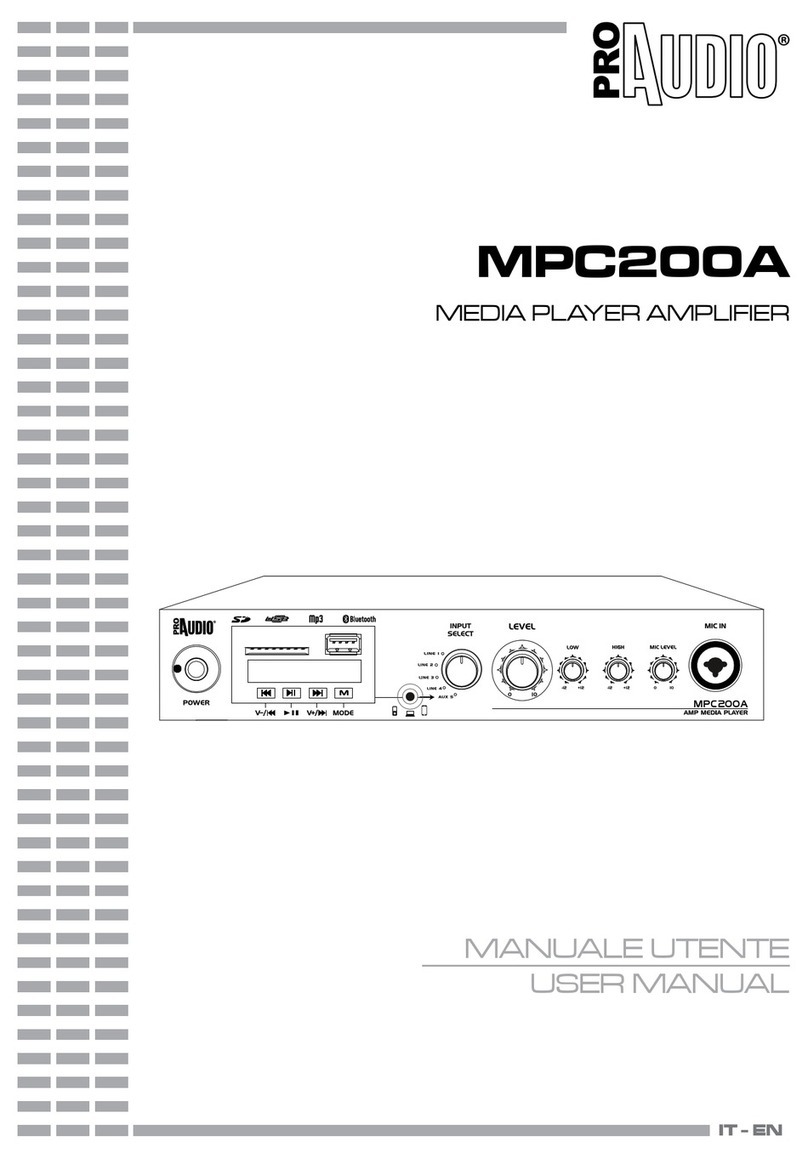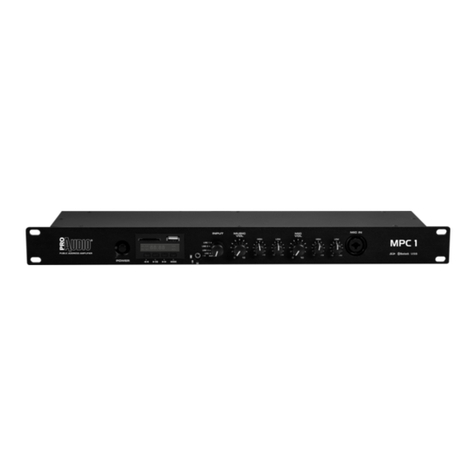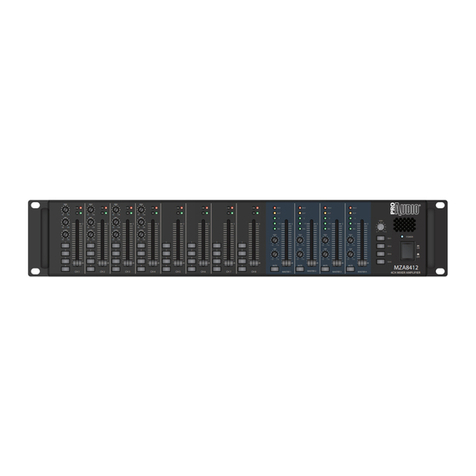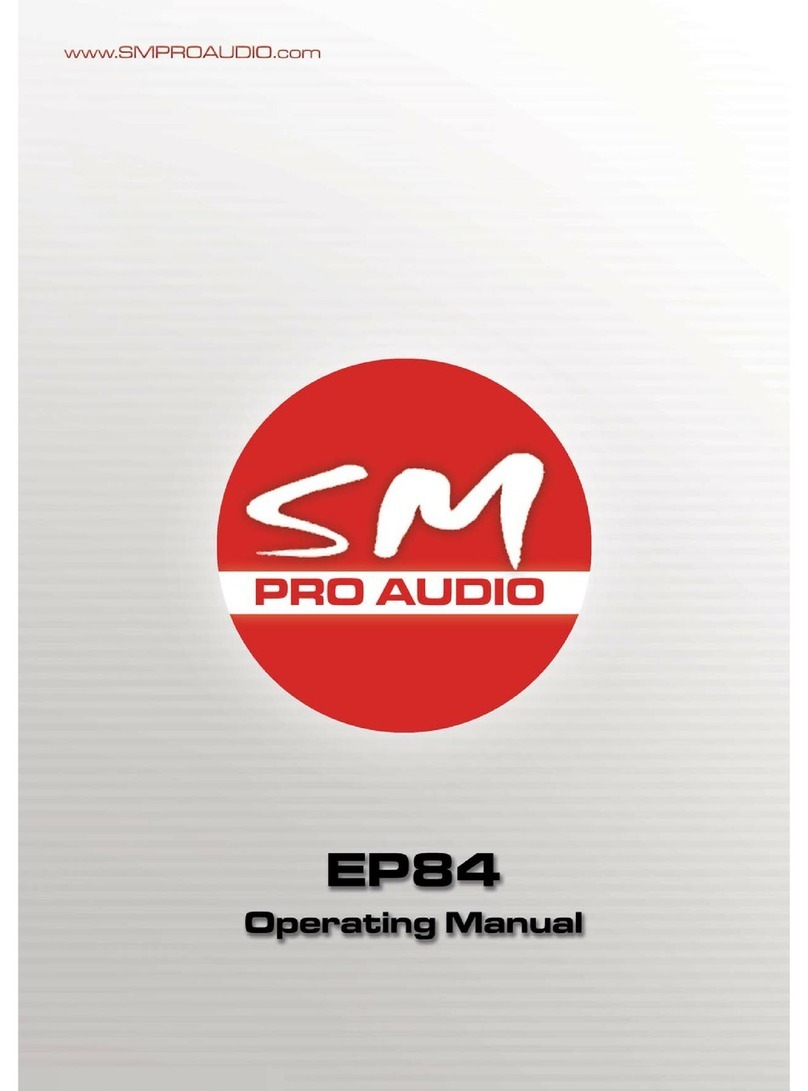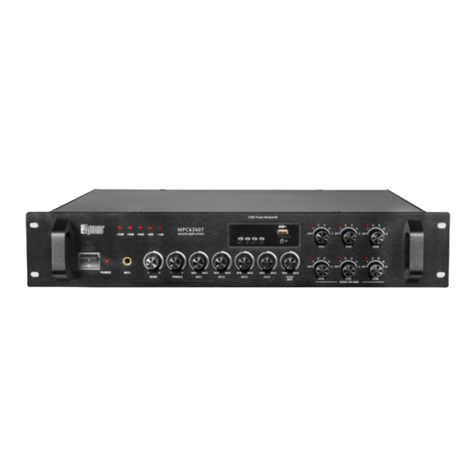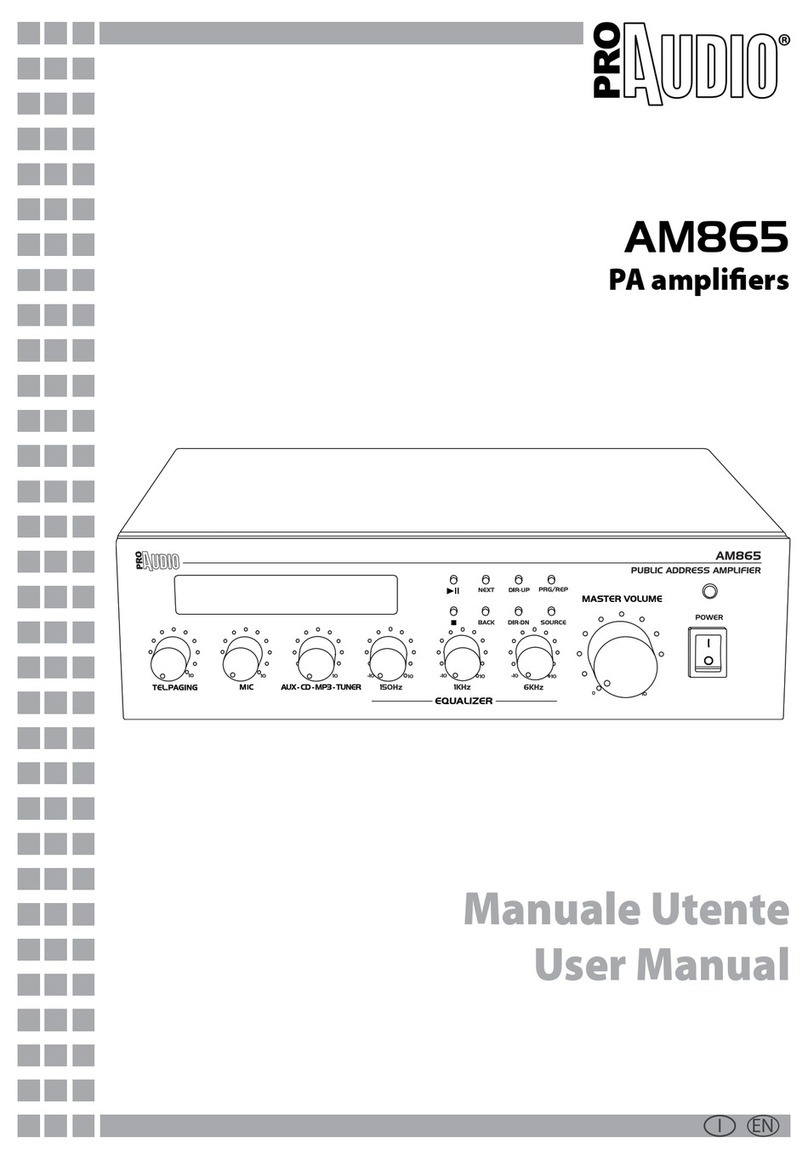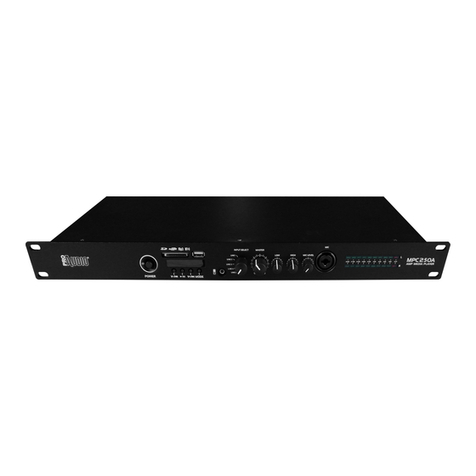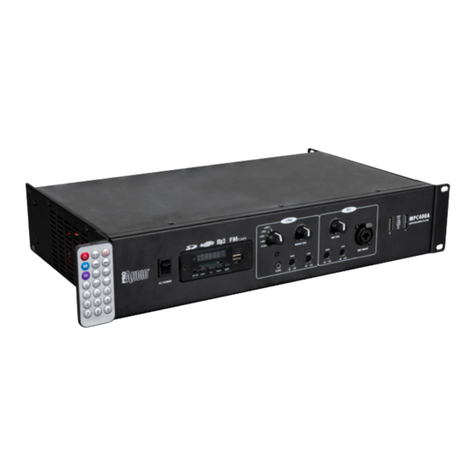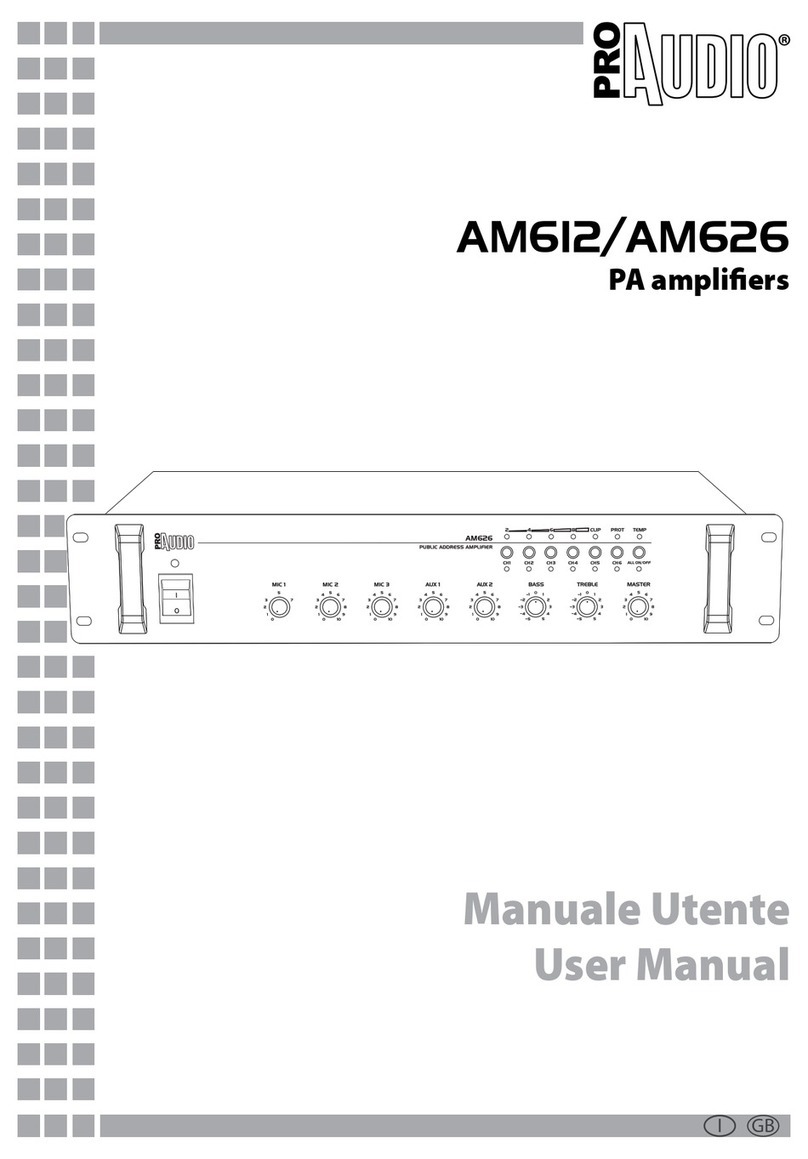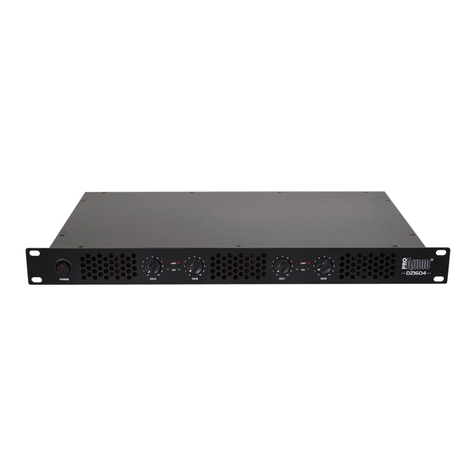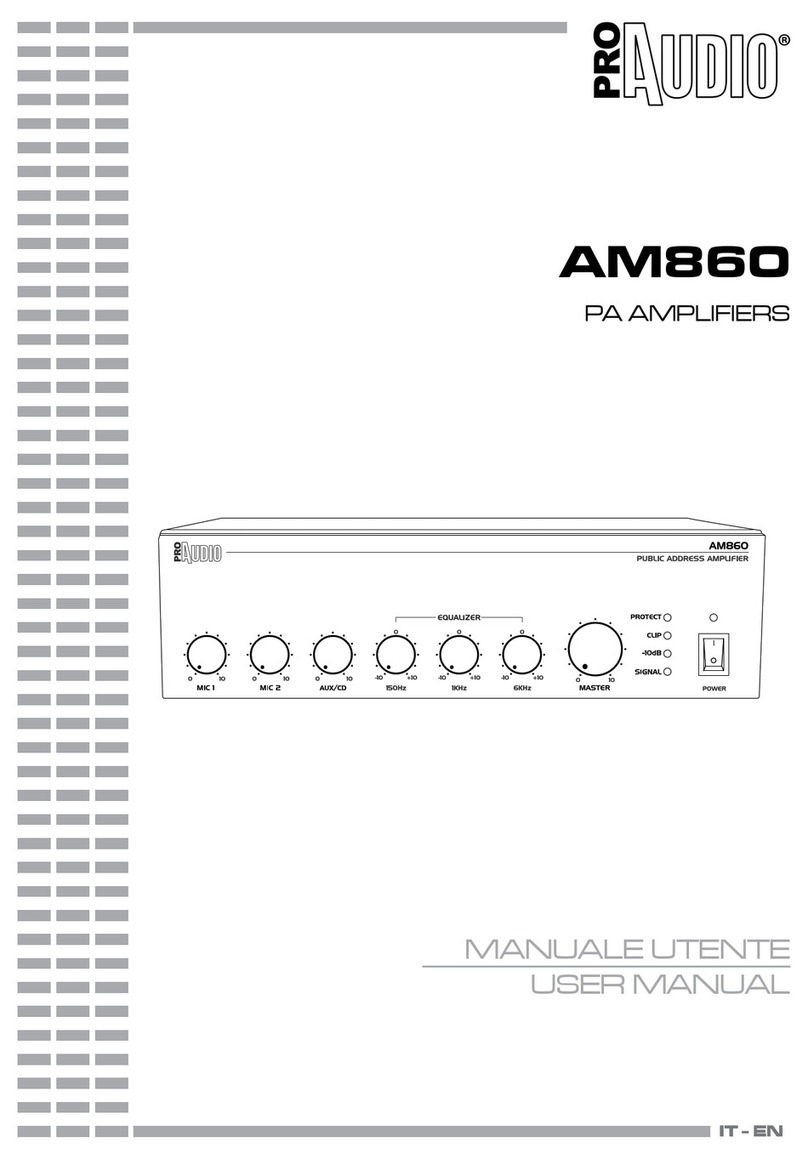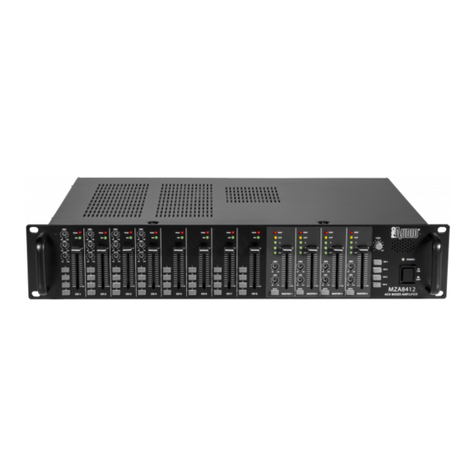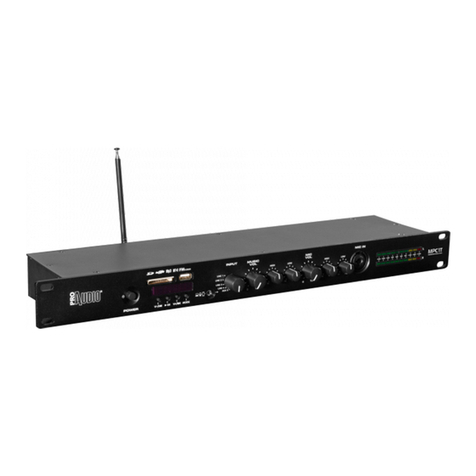
9
ENIT DZ802
1. FORI DI FISSAGGIO per il montaggio rack
2. INTERRUTTORE POWER
3. CONTROLLO DI LIVELLO ROTATIVO CANALE A:
Potenziometro per l’attenuazione del guada-
gno d’ingresso. In modalità “bridge” questo
potenziometro controlla il livello di due canali
mentre il canale B è inattivo. In modalità “ste-
reo” o “parallelo” questo potenziometro con-
trolla solo livello del canale A.
4. CONTROLLO DI LIVELLO ROTATIVO CANALE B:
Potenziometro per l’attenuazione del guada-
gno d’ingresso. In modalità “bridge” questo
potenziometro è inattivo; il livello è control-
lato dal potenziometro del canale A. In mo-
dalità “stereo” o “parallelo” il potenziometro
controlla solo il livello del canale B.
5. INDICATORI A LED:
- LIMIT (LIMITER): si accende quando l’ampli-
catore va in modalità di protezione. Può in-
dicare molti tipi di protezione, per esempio:
protezione dal surriscaldamento, segnale
non musicale ad alta frequenza (feed-back).
- SIG: si accende quando è presente un segna-
le all’ingresso.
6. INGRESSO XLR CHA: connettore XLR femmina
con ingresso bilanciato.
- Pin 1 = schermo o massa;
- Pin 2 = + positivo o“caldo”;
- Pin 3 = - negativo o “freddo”.
NOTA: questo è l’ingresso del canale A in
modalità STEREO, o l’ingresso di entrambi
i canali A e B in modalità PARALLEL o il solo
unico ingresso in modalità BRIDGE.
7. INGRESSO XLR CHB: come sopra, ma per
l’ingresso del CHB è attivo solo in modalità
STEREO.
8. LINK XLR CHA: connettore XLR maschio
connesso in parallelo con il rispettivo
connettore XLR femmina di ingresso del
canale A, in modo da rendere possibile il
collegamento in cascata di una seconda unità
9. LINK XLR CHB: connettore XLR maschio
connesso in parallelo con il rispettivo
connettore XLR femmina di ingresso del
canale B, in modo da rendere possibile il
collegamento in cascata di una seconda unità
10. SELETTORE ****BRIDGE/STEREO: permette di
determinare la modalità di funzionamento
dell’amplicatore.
11. USCITA CHA SPEAKON:--SPEAKON Pin 1+,
1. MOUNTING HOLES for xing the rack
2. POWER SWITCH
3. CHA ROTARY LEVEL CONTROL: Input gain at-
tenuator potentiometers. In bridge mode,
this potentiometer controls the level of two
channels, the CHB potentiometer is inactive.
In stereo or parallel mode: this potentiometer
just controls CHA level.
4. CHB ROTARY LEVEL CONTROL: Input gain at-
tenuator potentiometers. In bridge mode, this
potentiometer is inactive, the level is control-
led by CHA potentiometer. In stereo or paral-
lel mode, the potentiometer just controls CHB
level.
5. LED INDICATORS:
- LIMIT (LIMITER): When this indicator is il-
luminated, the amplier is in protection
status, this includes for example: over-heat,
high frequency self-excitation or long time
whistle.
- SIG: the led lights up indicates an input sing-
nal.
6. CHA XLR INPUT: XLR female connector with a
balanced line level input.
- Pin 1 = shield or ground;
- Pin 2 = + positive or“hot”;
- Pin 3 = - negative or “cold”.
NOTE:This is the input of Channel A in STEREO
mode, or the input of both channels A and
B in PARALLEL mode, or the only input in
BRIDGE mode.
7. CHB XLR INPUT: same as above, but channel B
operates only in STEREO mode.
8. CHA XLR LINK: This XLR male connector is
connected in parallel with the respective XLR
input female connector of channel A. This
enables a second unit (e.g. another amplier)
to be daisy-chained to the rst.
9. CHB XLR LINK: This XLR male connector is
connected in parallel with the respective XLR
input female connector of channel B. This
enables a second unit (e.g. another amplier)
to be daisy-chained to the rst.
10. STEREO/ BRIDGE/ PARALLEL MODE: It selects
the operation mode of the amplier.
11. CHA SPEAKON OUTPUT:
- Pin 1+ SPEAKON connected to POSITIVE out-
put of channel A;
- Pin 1- SPEAKON connected to NEGATIVE
output of channel A;
